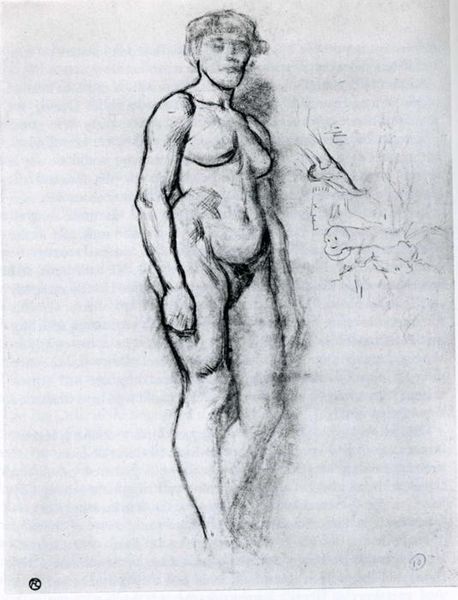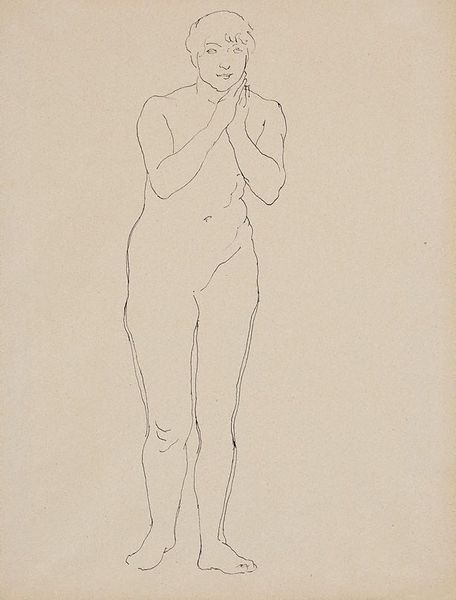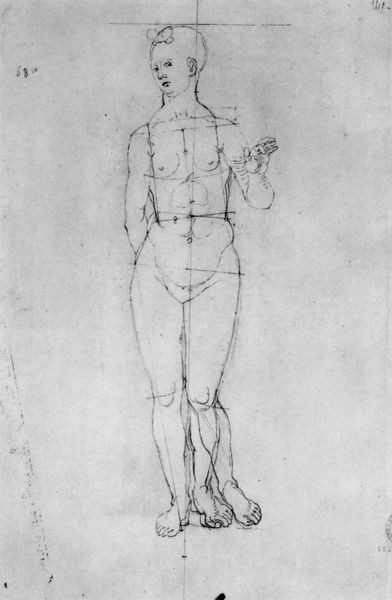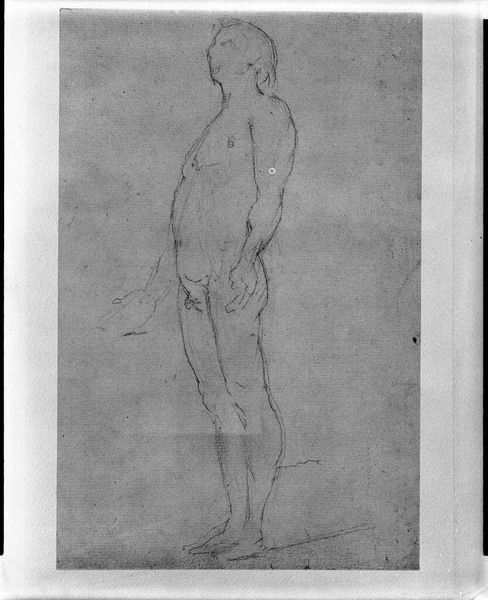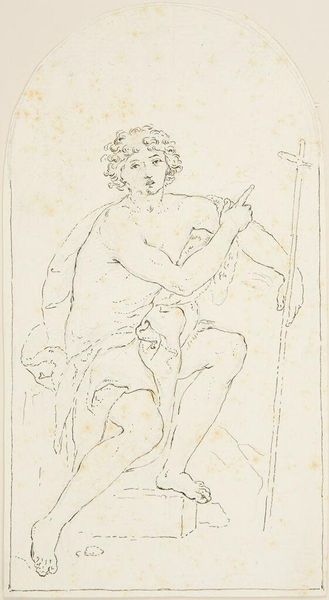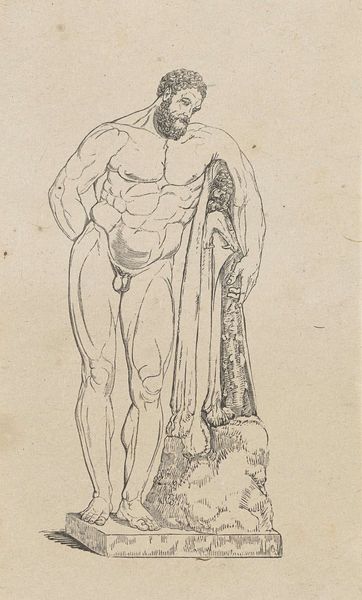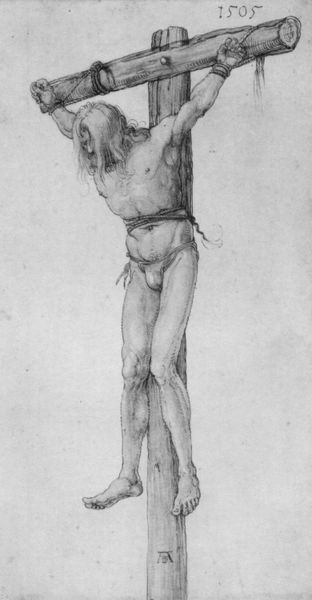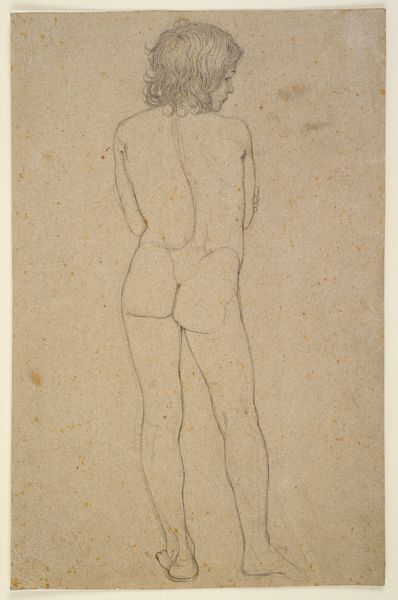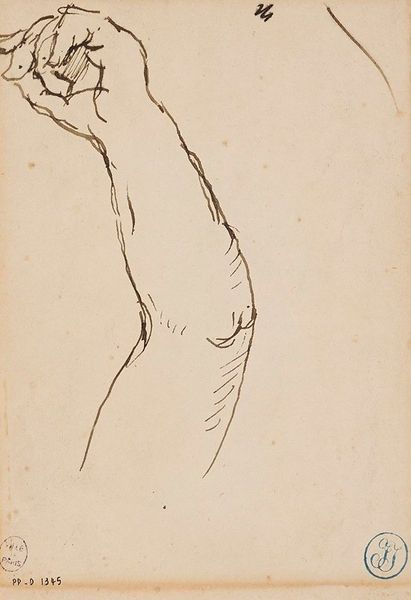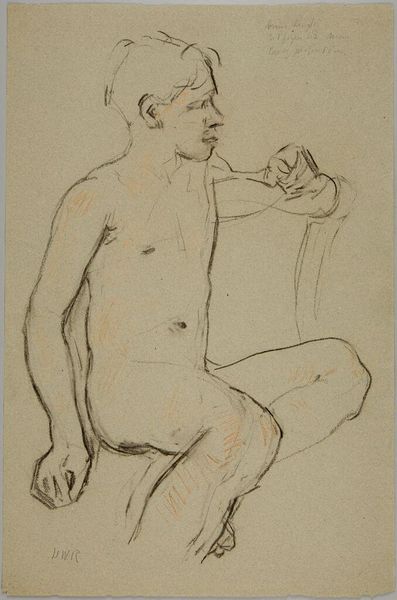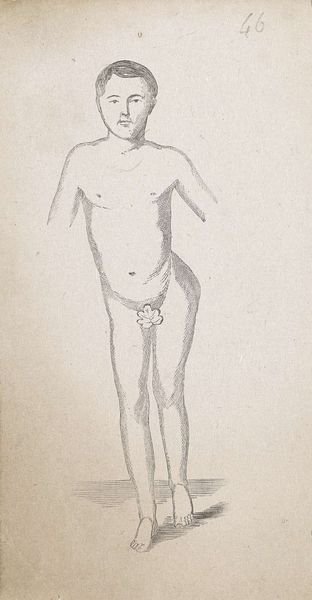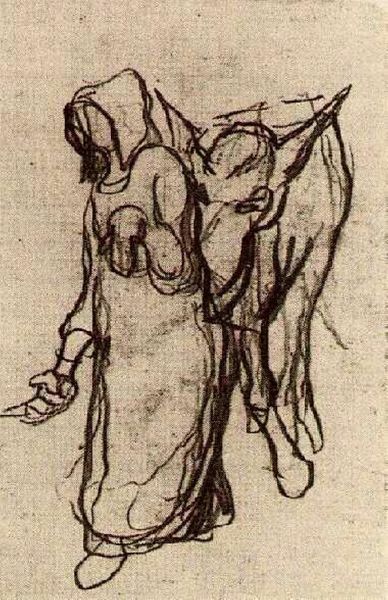
drawing, ink
#
portrait
#
drawing
#
cubism
#
blue ink drawing
#
figuration
#
ink
#
nude
#
male-nude
Dimensions: 13.3 x 9 cm
Copyright: Public domain US
Editor: We're looking at Picasso's "Portrait of nude Casagemas," from 1904, rendered in ink. It's such a simple line drawing, but the figure feels heavy with vulnerability. What's your interpretation of this piece? Curator: It’s a haunting image, especially knowing Casagemas's story. Beyond being a portrait, it’s a potent document reflecting the artist's response to the trauma of his friend’s suicide. How do we unpack Picasso’s representation of masculinity and vulnerability here, especially during this intensely formative period? What does it say about societal pressures placed on men to suppress emotion, a silence tragically embodied by Casagemas? Editor: I hadn't considered that silence. The crossed arms, almost shielding him, reinforce that idea. Was Picasso consciously engaging with these themes of societal pressure, or was it more of a subconscious expression of grief? Curator: The lines are blurred, and that's where the work becomes incredibly rich. Consider the artistic climate at the time – early 20th century, burgeoning modernism grappling with social upheaval. Picasso, already politically engaged, uses figuration, particularly the nude male form, to disrupt traditional narratives of power. This isn't a heroic nude; it’s a figure stripped bare, emotionally and physically. Editor: So, by depicting Casagemas in this vulnerable state, Picasso might be subtly critiquing the very norms that contributed to his friend's despair? Curator: Precisely! It challenges us to confront the intersections of masculinity, mental health, and artistic representation, inviting us to analyze whose stories are deemed worthy of portrayal, and how. What narrative is unspoken in traditional art history? Editor: I never thought about it that way. It shifts the focus from the aesthetic to the ethical dimensions of the work. Curator: Exactly. And that’s how art becomes a tool for dialogue and social change. Editor: Thank you. I see the drawing in a totally different, deeper way now.
Comments
No comments
Be the first to comment and join the conversation on the ultimate creative platform.
